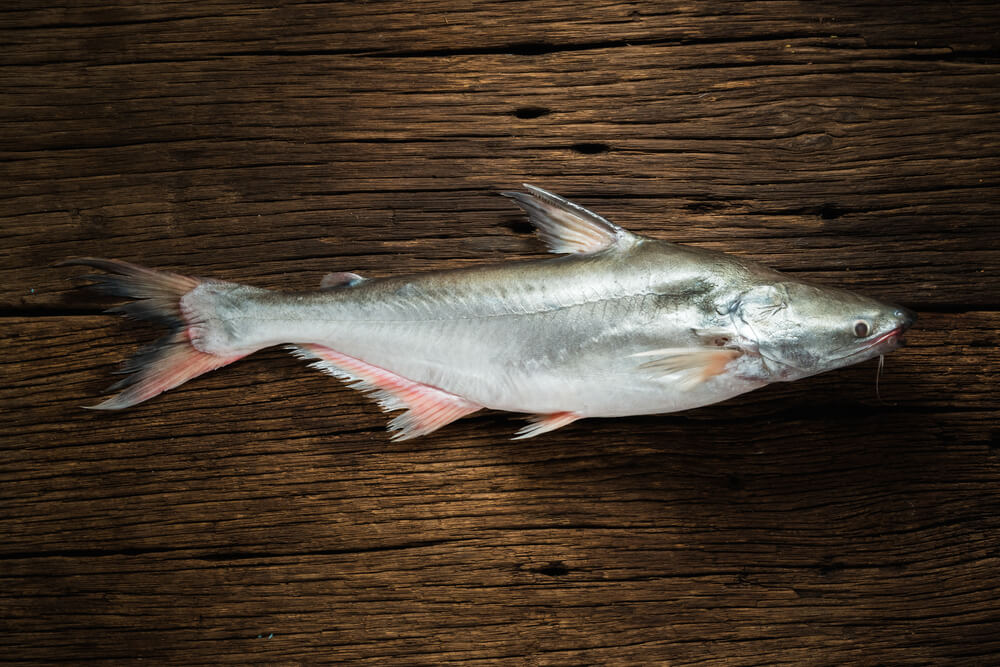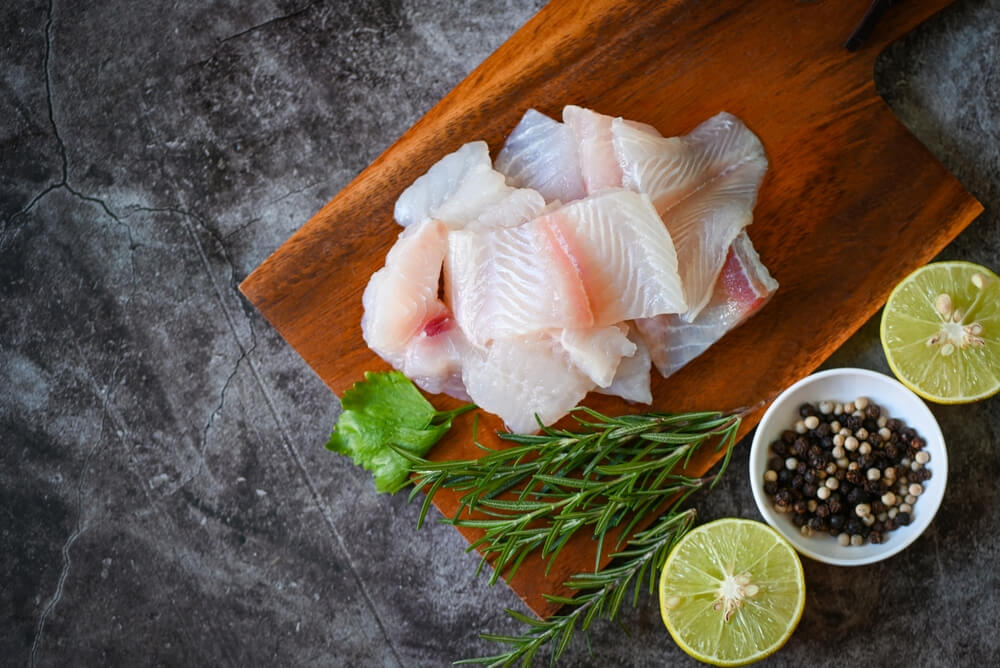
Swai fish, also known as Pangasius or iridescent shark, has become a popular choice among seafood lovers due to its mild flavor and affordable price. However, concerns about its safety and nutritional value have sparked debates among consumers. In this section, we’ll delve into the various aspects of Swai fish to help you make an informed decision.
Understanding What Swai Fish Is?
Swai fish, also known as Pangasius or iridescent shark, is a type of freshwater fish that belongs to the catfish family. Originating from Southeast Asia, particularly the Mekong River in Vietnam, swai has become a popular choice in many countries due to its mild flavor and affordable price.
One common question is: “Is swai fish safe to eat?” The answer largely depends on where and how it is farmed. Swai imported from reputable sources that adhere to stringent farming and processing standards can be safe for consumption. It’s important to check for certifications and opt for suppliers who follow good aquaculture practices.
Swai fish facts reveal that this species grows quickly and thrives in warm waters. It’s often marketed under various names such as Vietnamese catfish or Asian catfish, which can sometimes lead to confusion with other types of catfish like the U.S.-farmed channel catfish.
When considering swai for your meals, it’s beneficial to understand its origin. Knowing where swai comes from helps consumers make informed choices about their seafood intake while supporting sustainable practices within the industry.
The Health Concerns Surrounding Swai Fish Consumption

Swai fish, a popular choice due to its affordability and mild taste, has raised several health concerns among consumers and health experts. One of the primary issues revolves around swai fish health risks associated with its farming practices. Predominantly imported from Southeast Asia, particularly Vietnam, swai is often raised in crowded ponds where the risk of contamination is high.
Imported fish safety is a significant concern because these ponds can be polluted with harmful chemicals and antibiotics used to control disease outbreaks among densely packed fish populations. This leads to potential seafood contamination that can pose serious health risks to consumers. Reports have indicated that some swai may contain residues of harmful substances like mercury and polychlorinated biphenyls (PCBs), which are known for their long-term adverse effects on human health.
Health issues with swai consumption also include the risk of bacterial infections such as Vibrio and Salmonella if the fish is not properly handled or cooked. These bacteria can cause severe gastrointestinal distress and other complications, particularly in vulnerable populations like young children, the elderly, and those with weakened immune systems.
In light of these concerns about eating swai, it is crucial for consumers to be informed about the origins of their seafood and opt for sources that adhere to stringent safety standards. While swai remains an economical option for many households, understanding the potential health implications can help individuals make better choices for their overall well-being.
Nutritional Profile of Swai Fish (Pros and Cons)
Swai fish, a popular choice in many households due to its affordability, has a nutritional profile worth exploring. When considering swai fish nutrition facts, it is essential to weigh both the benefits and potential drawbacks.
One of the primary nutritional benefits of swai fish is its protein content. A standard serving provides around 15 grams of protein, making it a good source for those looking to maintain or build muscle mass. Additionally, swai is low in calories and fat, with approximately 70-100 calories and only 2-3 grams of fat per serving. This makes it an appealing option for individuals aiming to manage their weight without sacrificing protein intake.
However, when asking “is swai nutritious?” it’s important to consider some cons as well. Swai fish contains lower levels of omega-3 fatty acids compared to other fatty fish like salmon or mackerel. Omega-3s are crucial for heart health and cognitive function, so relying solely on swai may not provide all the necessary nutrients your body needs from seafood.
Moreover, as a low-cost seafood option, there are concerns about farming practices and potential contaminants. Swai is often raised in crowded conditions which can lead to higher use of antibiotics and exposure to pollutants.
While swai fish offers certain nutritional benefits such as being low-calorie and high-protein at an affordable price point, it’s important to balance these pros with considerations regarding omega-3 content and farming practices. Including a variety of seafood in your diet can help ensure you receive comprehensive nutritional benefits while enjoying different flavors and textures.
Sourcing and Farming Practices (What You Need to Know About Imported Swai Fish)
Swai fish, known for its mild flavor and affordability, has become a popular choice in many households. But where does swai come from? Predominantly, swai is imported from Southeast Asian countries, with Vietnam being the largest exporter. Understanding the sourcing and farming practices of swai fish is crucial for making informed decisions about its consumption.
One of the key concerns associated with imported seafood risks is the farming practices employed in these regions. Swai fish are typically farmed in freshwater ponds and rivers under conditions that may not always meet international standards for hygiene and sustainability. Overcrowding in these farms can lead to water pollution and increased susceptibility to disease, raising questions about food safety.
Sustainability concerns with swai farming also play a significant role in consumer choices. The intensive farming methods used to meet global demand can have detrimental effects on local ecosystems. Efforts are being made to improve these practices through better regulation and certification programs aimed at ensuring more sustainable production methods.
In conclusion, while swai fish offers an affordable option for consumers, it’s important to be aware of the potential risks associated with its importation and farming practices. Opting for certified sustainable sources can help mitigate some of these concerns while supporting more responsible aquaculture methods globally.
Expert Opinions and Recommendations on Eating Swai Fish Safely
Swai fish, a popular choice among seafood enthusiasts, often raises questions regarding its safety and nutritional value. To navigate these concerns, we turn to expert opinions and recommendations that provide clarity on incorporating swai fish into your diet.
Experts in nutrition and food safety emphasize the importance of understanding the source of your seafood. When it comes to diets including swai fish, advice from experts typically highlights the significance of sourcing responsibly farmed fish. Swai is predominantly imported from Southeast Asia, where farming practices can vary significantly. Therefore, checking for certifications such as those from the Aquaculture Stewardship Council (ASC) or Best Aquaculture Practices (BAP) can ensure that you are consuming high-quality products.
Food safety guidelines for seafood consumption generally recommend thorough cooking to eliminate potential contaminants. Swai should be cooked to an internal temperature of 145°F (63°C) to ensure it is safe for consumption. Additionally, diversifying your seafood intake can help mitigate any risks associated with consuming farmed fish regularly.
When considering whether you should avoid eating imported fish like swai, experts suggest a balanced approach. While some imported farmed fish have faced scrutiny over farming conditions and environmental impact, not all imports pose a risk. Opting for certified products and staying informed about the origins of your seafood can help you make safer choices without completely eliminating swai from your diet.
In summary, while there are considerations to keep in mind when eating swai fish, following expert recommendations on sourcing and food safety can allow you to enjoy this affordable and versatile protein safely.
Conclusion
When it comes to making an informed decision about eating swai fish, several factors should be considered. Swai fish, also known as pangasius or iridescent shark, is a popular choice due to its mild flavor and affordability. However, potential consumers should be aware of both the benefits and concerns associated with this type of fish.
Nutritionally, swai provides a good source of protein and essential nutrients such as omega-3 fatty acids, which are beneficial for heart health. It is also low in calories and fat, making it an attractive option for those looking to maintain a balanced diet.
On the other hand, there are environmental and health considerations that need attention. Swai is often farmed in Southeast Asia under conditions that may not always meet the stringent standards found in other parts of the world. Issues such as water pollution and the use of antibiotics have raised concerns about the quality and safety of some imported swai products.
To make an informed choice, consumers should look for certifications from reputable organizations that ensure sustainable farming practices and rigorous testing for contaminants. Additionally, opting for domestically farmed swai or other sustainably sourced seafood alternatives can mitigate some of these concerns.
While swai fish can be a nutritious and cost-effective addition to your diet, it is crucial to consider its sourcing practices and potential environmental impacts. By staying informed and choosing responsibly sourced products, you can enjoy this versatile fish while supporting sustainable fishing practices.



